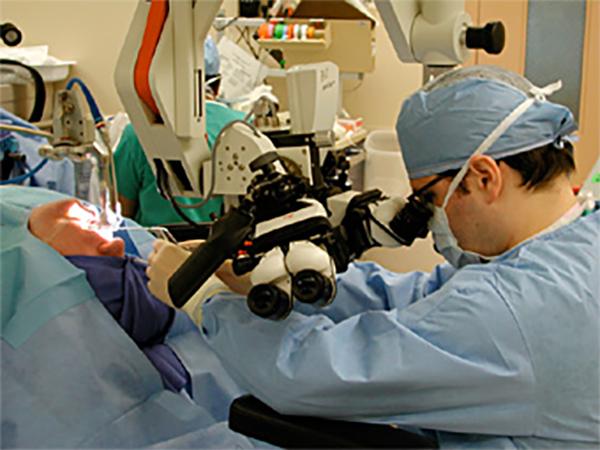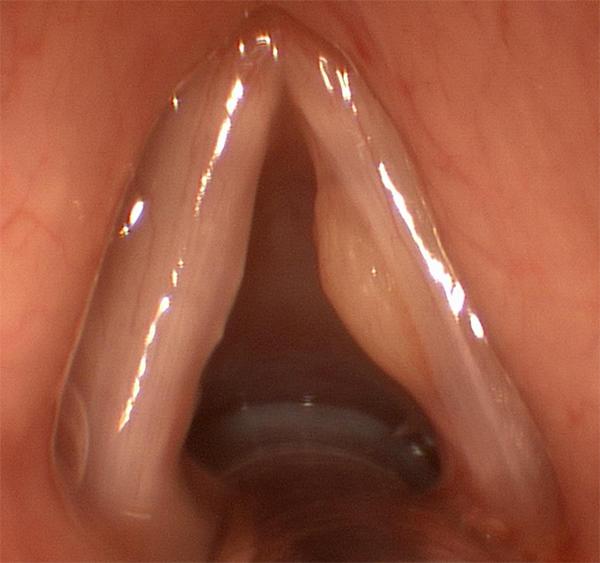What is microscopic laryngeal surgery?
Microscopic laryngeal surgery, otherwise known as microlaryngoscopy, is the most precise means of visualizing and operating on the vocal folds. It allows the use of the two most essential tool sets in laryngeal surgery: the operative microscope, and microlaryngeal dissection instruments. All surgery is done through a laryngoscope, an instrument inserted via the mouth, without the need to make skin incisions.
What is microscopic laryngeal surgery used for?
Microlaryngoscopy is a surgical technique used in the evaluation and removal of various lesions of the vocal folds, including (but not limited to): cancer, cysts, papilloma, polyps, and Reinke’s edema.

A surgeon looks through through the operating microscope and uses fine microinstruments to remove a vocal fold polyp.
What is the patient experience of microscopic laryngeal surgery?
Microlaryngoscopy is performed while the patient is under general anesthesia, administered and monitored by an anesthesiologist working in close collaboration with the surgeon. Despite the use of general anesthesia, it remains an ambulatory procedure - allowing a patient to go home the same day as the procedure, which takes approximately one hour. Pain after surgery is not severe, and rarely requires more than over-the-counter pain relievers.

A large right vocal fold cyst is approached via microlaryngoscopy under general anesthesia.
What are the risks of microscopic laryngeal surgery?
Complications arising from microscopic laryngeal surgery are rare. They can include temporary numbness or tingling of the tongue, and damage to teeth - especially in the presence of crowns, caps and veneers, or if the teeth are in poor condition to begin with. The most challenging complication is vocal fold scar.
The Carbon Dioxide Laser
The use of the carbon dioxide laser for surgery of the vocal fold is controversial. Most laryngologists prefer to avoid it, for although the cutting beam is precise, it is hypothesized that the underlying tissue reaction to the emitted heat is somewhat unpredictable, and may at times result in scarring. The alternative is the use of steel microlaryngeal dissection instruments. Although these are more technically difficult to use, they offer equivalent or better accuracy, and perhaps less potential for inadvertent damage and scar.

